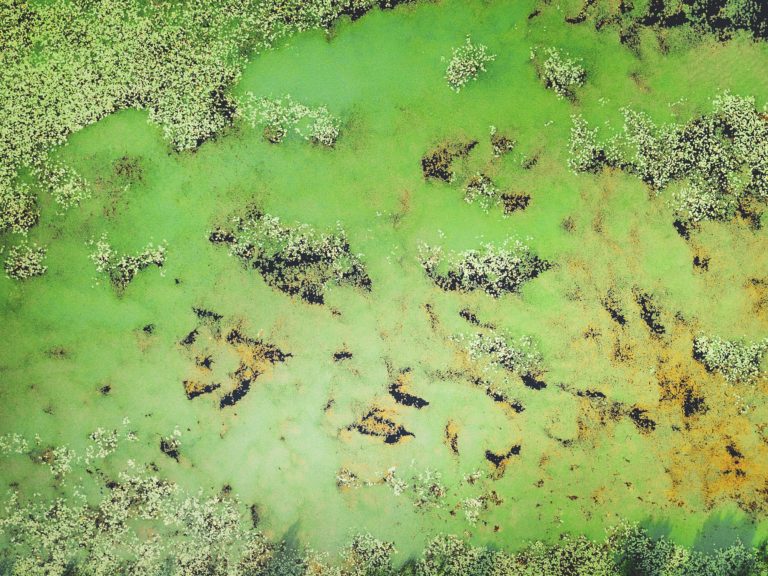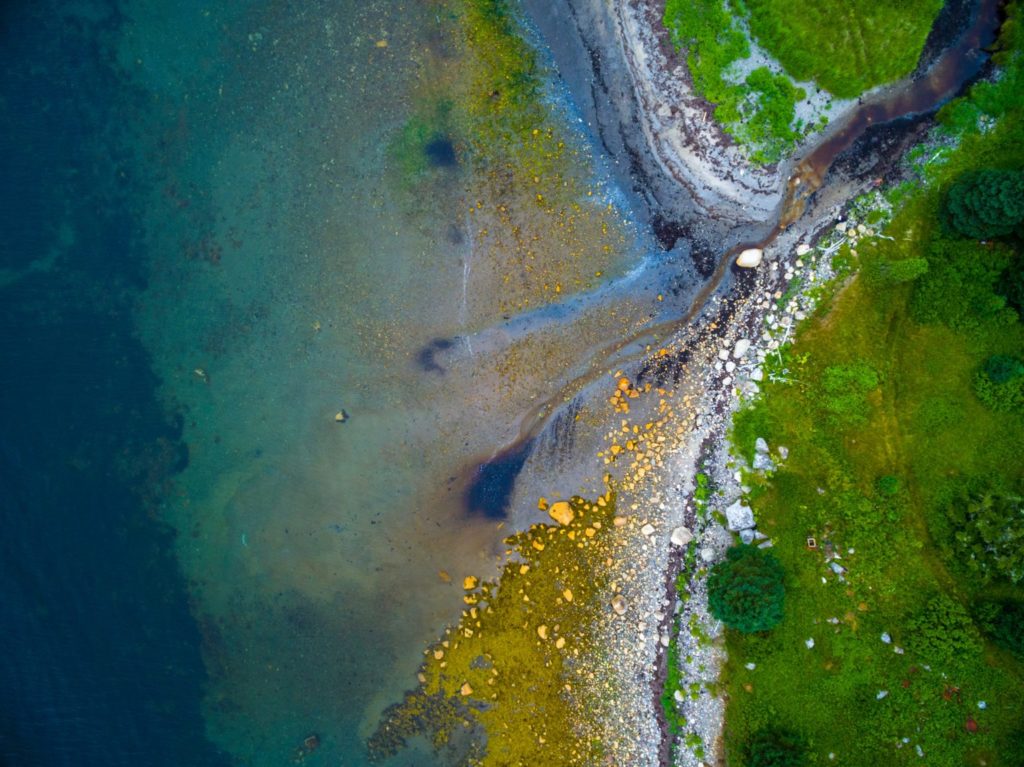
In many lakes, the amount of phosphorus in the water controls how big and how bad a bloom becomes. So the key to controlling blooms is reducing the amount of excess phosphorus that reaches the lakes. For instance, the phosphorus in Lake Erie comes from many different places, with the largest amount coming from agricultural lands. Phosphorus helps plants grow. This is a good thing for farmer’s fields, but too much of it is quite the opposite for the health of surrounding water bodies.
Blooms also have direct economic implications. Who wants to own property, spend vacation time, or play on beaches covered in slimy mats of algae? Blooms discourage people from enjoying the water which means fewer boaters, anglers, and beach goers – and less of the money they bring to shoreline communities.
Large algal blooms can make water unsafe for people and their pets, fish and wildlife. Harmful algal blooms, made of a particular type of algae that release a variety of liver, skin, and neurological toxins, can make swimming unsafe. Large blooms also disrupt the way a whole lake ecosystem works. When algae die and sink to the lake bottom to decay, they rapidly deplete the supply of oxygen dissolved in the water, creating “dead zones,” where fish and other aquatic life cannot survive. In extreme cases, this results in large numbers of dead fish washing onto shore.
Toxic algae is a human health concern. Research from Brain Chemistry Labs suggests a link between cyanobacteria, blue-green algae, and Alzheimer’s and Parkinson’s diseases. In 2014, 400,000 residents in Toledo, Ohio went without drinking water for three days. Over 100 people got sick during that time. 10% of water-related illnesses reported between 2013 and 2014 came from harmful algal bloom contamination in Ohio drinking water.


Copyright 2023 Freshwater Future. All Rights Reserved.